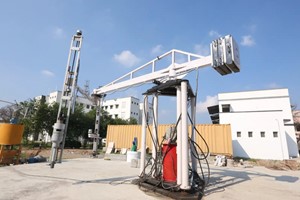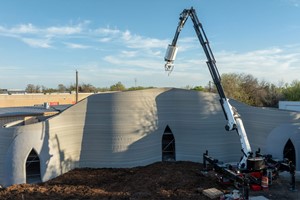The construction industry stands on the brink of transformation as AI, automation, and electric vehicles promise to revolutionize the way work is performed. Tim Crane, VP of Autonomy, and Todd Farmer, Construction Tech Product Manager, recently shared insights into how these technologies are already shaping the industry and teased upcoming advancements.
Farmer highlighted that the company’s giant mining trucks have operated autonomously for over a decade. Automation is also present in other products, such as 3D grading assistance that ensures bulldozers stay on their intended paths. Additionally, the Cat Command remote control system enables operators to control machinery from a distance, enhancing both safety and efficiency.
Crane emphasized the necessity of this technology due to chronic labor shortages in the construction industry, with an estimated half a million workers needed. Productivity in construction lags behind other industries, but automation and AI can bridge this gap by reducing the need for traditional roles like grade checkers, saving time, and enabling new workers to perform tasks as proficiently as experienced crews. Remote operation allows one driver to control multiple pieces of equipment, further optimizing labor use.
Safety is a significant concern in construction, with about a fifth of accidents being fatal. Autonomy in vehicles makes them easier and safer to use. Semi-autonomous systems simplify tasks such as digging, where an excavator can automatically dig to a set depth. The Cat Command system also keeps operators at a safe distance from hazardous situations, such as those involving explosives.
Farmer announced the upcoming Collision Warning with Motion Inhibit system, expected in late 2024 for medium loaders. This system uses AI perception technology to prevent vehicles from moving until obstacles are cleared. Future technologies will react to oncoming risks and assist vehicles in maneuvering through tight spaces.
Crane underscored the essential role of AI in various construction areas, including documentation. He envisions a future where one operator manages multiple vehicles from a single location, transforming the role of operators into commanders overseeing fleets of machinery.
The company's advanced equipment includes a compact track loader with dual GNSS positioning masts for 3D grading. The loader features joystick controls and can automatically switch from navigation to operating attachments like a grading blade. An Android tablet aids in advanced grading, providing precise plans and ensuring accurate construction.
Other equipment, like the excavator and compactor, incorporates automation to assist operators. The excavator includes a depth assist, e-fence system, and bucket assist, while the compactor provides data estimates for soil compression. These features make the machinery easier to use, even for novices, and reduce the learning curve for new operators.
The Cat Command system offers a near-cabin experience with a three-display setup and extensive controls. Operators can perform virtually any task from a distance, leveraging semi-autonomy, geofencing, and other technologies to enhance efficiency and safety.
Caterpillar also showcased a prototype electric variant of its 950 GC wheel loader, demonstrating the potential for electric technology in construction. This electric loader, powered by a 256kW battery system with a 600V architecture, supports fast charging and boasts significant power. Production of the electric loader is expected within a year and a half, though the company remains cautious about adopting standards like Tesla's NACS charging port.
The construction industry is undergoing significant changes with AI and electrification on the horizon. While Caterpillar is at the forefront of this transformation, the full potential of these technologies is still years away. The company faces competition from others like Volvo and Bobcat, who are also developing autonomous equipment. However, Caterpillar's existing technologies, such as assists and remote control, are already benefiting real customers and showcasing the tangible advantages of automation in construction.
By Jon Fingas














